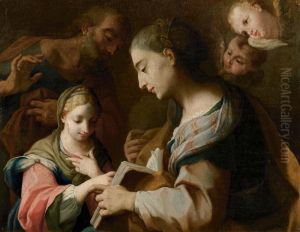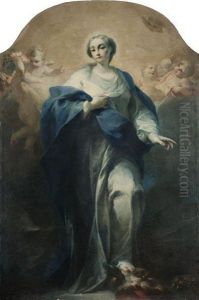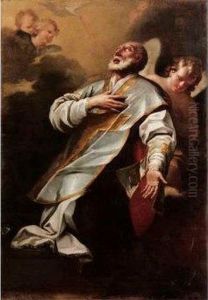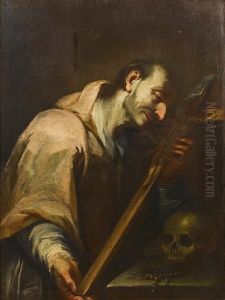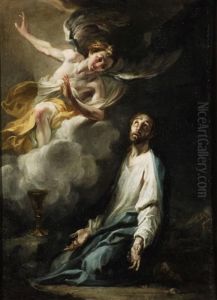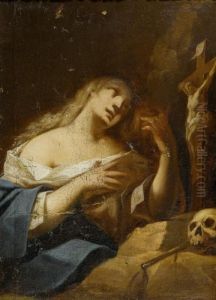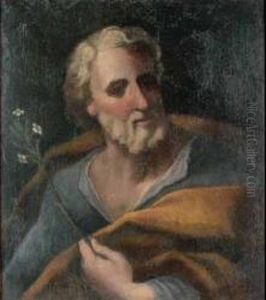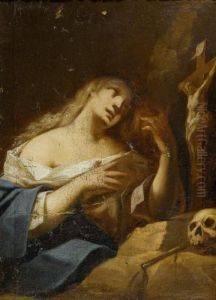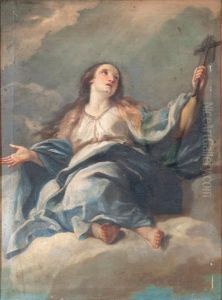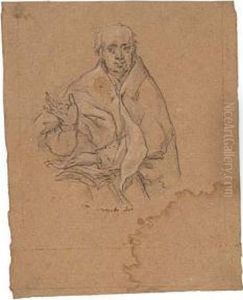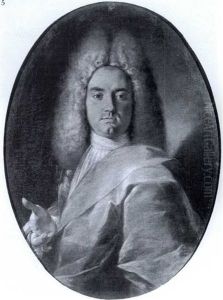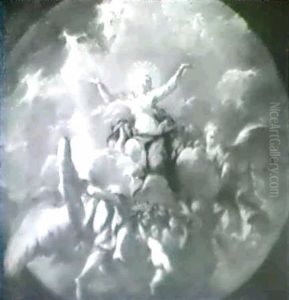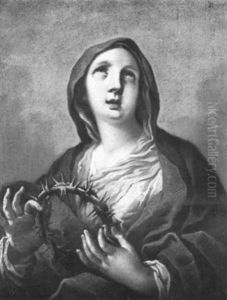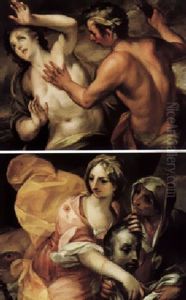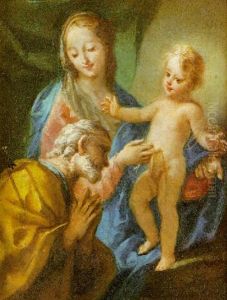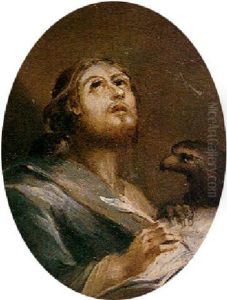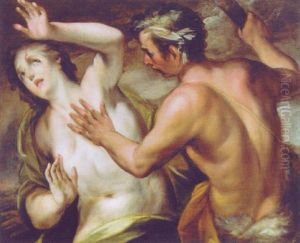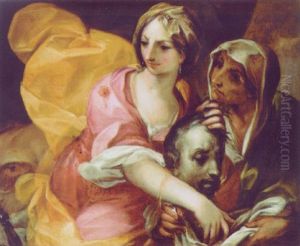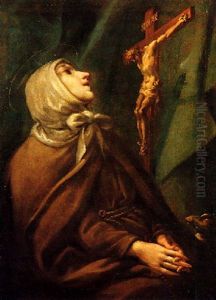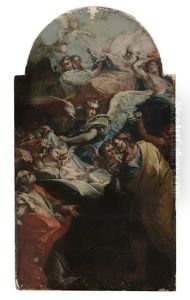Pietro Antonio Magatti Paintings
Pietro Antonio Magatti was an Italian painter active during the Baroque period, primarily in his native country. Born in 1691 in Varese, a town in Lombardy, Italy, Magatti showed an early inclination towards the arts. He was initially trained by local artists in Varese before moving to Milan to further his education and refine his painting skills.
In Milan, he was influenced by the works of prominent Baroque artists, which is reflected in his use of dramatic light and shadow, as well as his dynamic compositions. Magatti's work was primarily religious in nature, as was common for the period, and he completed numerous commissions for churches and religious institutions. His paintings often featured biblical scenes, saints, and depictions of the Virgin Mary.
Magatti's style was characterized by its vibrant colors, attention to detail, and expressive figures. He also showed a particular skill in creating lifelike portraits. Despite being less well-known than some of his contemporaries, Magatti’s work was appreciated for its devotional quality and technical proficiency.
Throughout his career, Pietro Antonio Magatti remained active in the region around Lombardy. He contributed to the cultural landscape of northern Italy during a time when Baroque art was flourishing. His works can still be found in various churches and collections in the region.
Magatti passed away in 1767, leaving behind a legacy as a skilled painter of the Italian Baroque, with a modest but dedicated following of art aficionados who appreciate his contributions to the period’s artistic achievements.
